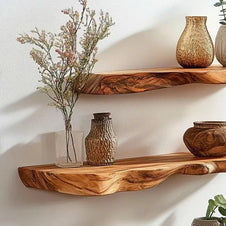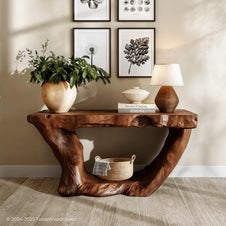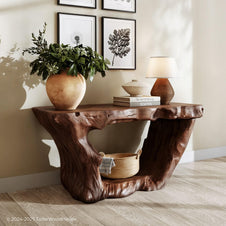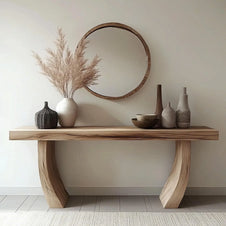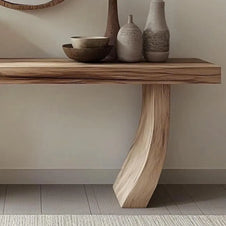Build your own DIY corner tree bookshelf with custom size, style, and function. This guide covers measurements, tools, and step-by-step instructions.
Why a DIY Corner Tree Bookshelf Is the Perfect Space-Saving Solution
A DIY corner tree bookshelf is one of the smartest and most creative ways to maximize unused space in your home. Whether you're in a cozy apartment or a spacious house, corners often go underutilized. Instead of leaving them bare, a tree-style bookshelf turns them into a focal point—both functional and artistic.
The benefit of going the DIY corner tree bookshelf route is that you control everything: dimensions, materials, color, and shape. You can build it to fit your exact wall size, match your decor, and make it truly one of a kind.
This guide will walk you through:
-
Planning your DIY corner tree bookshelf design
-
Measuring your wall space accurately
-
Choosing the right materials and tools
-
Building and installing it safely and beautifully

No time to build? These pre-made corner tree shelves bring the same visual magic—minus the work.
Step 1: Measure the Corner for Your Tree Bookshelf
Before cutting a single board, it’s crucial to understand your space. Measure:
-
Corner angle: Standard corners are 90°, but older homes may vary
-
Wall width on both sides: From corner outward on each wall
-
Ceiling height: Especially important if building floor-to-ceiling
-
Baseboard depth and height: Affects flush fit
Write these down as your master reference. Your DIY corner tree bookshelf must respect all these measurements to look balanced and to stand securely.
Tip: Use painter’s tape to outline the tree trunk and branches directly on the wall. This lets you visualize proportions before building.
Step 2: Design Your DIY Corner Tree Bookshelf Layout
Your bookshelf should mimic the natural form of a tree, but with practical storage as a goal. Here’s how to design smartly:
-
Trunk: Use a vertical spine anchored to the corner wall
-
Branches: Staggered shelves projecting from each side at varied angles
-
Base: Wide enough to support weight but shaped to avoid foot traffic
-
Height and Width: Typically 60–84 inches high, 12–18 inches from corner outward
Your DIY corner tree bookshelf design should balance symmetry with playful variation. You can sketch it or use free design tools like SketchUp to simulate it virtually.
Make sure branch spacing allows room for books (8–12" vertical clearance).

Explore our ready-made corner tree bookshelves crafted with care and built to fit beautifully.
Step 3: Choose Your Materials Wisely
The beauty of a DIY corner tree bookshelf comes from both form and finish. Recommended materials include:
-
Plywood or MDF: Cost-effective and easy to cut for branches
-
Pine, oak, or walnut: If you want a natural woodgrain look
-
Wall anchors and L-brackets: For added support
Avoid overly heavy wood unless anchoring into studs. Make sure all materials are sanded smooth before assembly.
Optional finishes:
-
Matte black or white paint for a modern look
-
Stained wood for rustic appeal
-
Colored backing boards to make branches pop

Artisan-built corner tree bookshelves with custom material options.
1. Measuring Tape
This is your most used tool from start to finish. Choose a tape that’s at least 16 feet long with a strong, retractable blade. It helps with:
-
Measuring wall height, width, and baseboard depth
-
Laying out branch spacing
-
Verifying material cuts before sawing
Pro tip: Mark measurements directly on painter’s tape instead of wood—easier to adjust if needed.
2. Circular Saw or Jigsaw
For cutting wood, especially angled branches, a circular saw provides fast straight cuts. A jigsaw, on the other hand, gives you more flexibility for curved or organic lines.
Use:
Always use clamps to stabilize your wood and safety goggles while cutting.
3. Power Drill
A cordless drill is indispensable for:
-
Pre-drilling holes to avoid wood splitting
-
Driving screws into wall studs or L-brackets
-
Installing wall anchors and corner supports
Consider one with adjustable torque settings for more control during assembly.
4. Stud Finder
Never rely on guesswork for mounting. A stud finder ensures you’re anchoring the trunk and shelves into solid support. It also helps you:
-
Avoid electrical wires or plumbing
-
Locate the best points to install anti-tip hardware
-
Plan bracket spacing before drilling
Many digital stud finders also show wire depth or beam centers, which is a huge bonus.
5. Wood Glue
While screws and brackets provide core support, wood glue:
-
Secures seams at invisible joints
-
Strengthens the bond between trunk and branches
-
Prevents wobble over time
Apply sparingly—excess glue can ruin your finish and be difficult to sand off later.
6. Sandpaper or Electric Sander
Smooth surfaces = a professional look. Use 120- to 220-grit sandpaper to:
-
Round sharp corners on branches
-
Prep surfaces before staining or painting
-
Remove rough edges from plywood or MDF
An orbital sander will save you a lot of elbow grease if working with multiple branches.
7. Painter’s Tape and Clamps
Painter’s tape isn’t just for layout—it’s helpful to:
-
Hold temporary guides in place
-
Mask areas during painting
-
Mark branch heights and angles on the wall
Clamps, meanwhile, are your third hand:
-
Hold branches in place during gluing or drilling
-
Help test-fit complex intersections before fastening
-
Keep long boards from warping during assembly
Choose adjustable clamps (12–24") for versatility.
If you’re doing this solo, clamps are essential to hold branches in place while securing them.
Step 5: Cut and Prep All Your Pieces
Refer to your layout drawing to cut the main trunk and branches. Label each piece with chalk or tape. Sand every edge smooth.
Double-check all measurements before moving to assembly—mistakes in angles are especially common in corner designs.
Dry-fit the entire DIY corner tree bookshelf once before final installation. This ensures every branch lines up and your structure stands flush against both walls.
Step 6: Assemble and Install
-
Install the vertical trunk first, anchoring it into studs on both adjacent walls.
-
Attach the base using brackets or screw-through method into trunk.
-
Branch by branch, secure each shelf using glue and angled screws or pocket holes.
-
Check level after every install step. Tree shelves can easily tilt if you skip this!
-
If desired, use filler and touch-up paint to cover screw holes.
For extra strength, especially with heavier books, add underside supports where branches exceed 12 inches in length. Once installed, let glue dry overnight before loading any weight.
Safety and Stability Tips
-
Always anchor your DIY corner tree bookshelf to studs, not just drywall
-
Use corner brackets on top and bottom for anti-tip security
-
Test stability by applying light weight gradually before full load
-
Avoid placing heavy objects on the topmost branch
If kids are around, keep the bottom branches free from small items or secure them with baskets.
Styling Your Finished DIY Corner Tree Bookshelf
Now comes the fun part. You can:
-
Add trailing plants from upper branches
-
Use warm LED strip lights to outline the trunk
-
Fill each branch with a mix of vertical books and horizontal stacks
-
Display framed photos, collectibles, or candles
To create more contrast, backlight the trunk using plug-in LED puck lights. Or add a painted mural behind to enhance the tree illusion.

Handmade from start to finish, our corner tree bookshelf collection is perfect for those who want beauty without the DIY.
Real Examples for Inspiration
-
A small DIY corner tree bookshelf in a studio apartment used floating hexagonal shelves as “leaves,” with each one spaced at a 60° angle from the trunk.
-
In a child's room, one user painted the back wall sky blue and added animal decals under each shelf—turning their DIY corner tree bookshelf into an interactive space.
-
A reader built their DIY corner tree bookshelf out of reclaimed wood and left rough edges for a more “forest-found” aesthetic.
Take what inspires you and adapt it to your home, always starting with accurate measurements.
For cozy, minimalist shelf inspiration, check out this floating shelf styling guide from A Beautiful Mess.
Troubleshooting Common DIY Corner Tree Bookshelf Issues
-
Branches sagging? Reinforce with metal angle brackets underneath.
-
Trunk not flush to the wall? Check for baseboard interference—trim or notch your board accordingly.
-
Shelf not level? Loosen and re-align before tightening completely.
-
Wobbly structure? Use L-brackets to triangulate top connections.
These problems are common but easily avoidable with planning. Your DIY corner tree bookshelf should feel sturdy from base to branch.
How to Modify the Design Over Time
As your needs change, your DIY corner tree bookshelf can too:
-
Add removable panels for hidden storage
-
Use clip-on lights to change the mood
-
Paint branches a new color seasonally
-
Swap some branches for angled glass to lighten the look
Think of it as a growing part of your home, just like a real tree.
Final Thoughts: Build a Tree That Grows With You
Building a DIY corner tree bookshelf isn’t just a weekend project—it’s an investment in personalized, functional design. Every angle you measure, every branch you cut, adds to the story of your space.
Whether you're showcasing novels, succulents, or childhood mementos, a DIY corner tree bookshelf gives those items a stage that’s sculptural, smart, and stylish.
Take your time, make it yours, and let your creativity branch out—one measurement, one shelf, one tree at a time.


